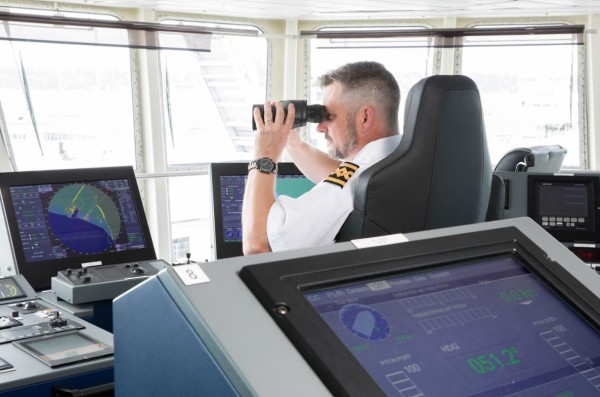Feature Story Sperry Marine FOG cuts through ship jamming and spoofing
페이지 정보
작성자 최고관리자 댓글 0건 조회 55회 작성일 25-08-22 13:20본문
Sperry Marine FOG cuts through ship jamming and spoofing
Ralf Magner
Once detected as isolated incidents - if at all – jamming and spoofing of ship locations now afflict the world’s busiest waterways. Sperry Marine’s Ralf Magner explains how the fibre optic gyrocompass is helping commercial shipping stay safe.
As nation states cloak assets and disguise tactics for aggressive or defensive purposes, the signals sent to confuse guided missiles or drones also override the data ships receive from GNSS. Jamming can render the technology that navigators rely on temporarily useless, while spoofing can lead ships to steer far from their intended course.
Extraordinary in 2017, when a U.S. Maritime Administration alert led to the discovery that GPS on 24 ships in the Black Sea placed them near Gelendyhik airport for days, Global Navigation Satellite Systems interference rose sharply after Russia’s invasion of Ukraine. By July 2023, the NATO Shipping Centre was also reporting regular disruption in the East Mediterranean.
Even so, few could have predicted the deluge to come. On April 4, 2024 alone - Lloyd’s List Intelligence reported 227 cargo ships in the Black Sea as located at multiple sites inland and 117 ships in the Mediterranean as in position at Beirut-Rafic Al Hariri Airport.
Figures from Windward AI indicate that, in Q2 2025, tracking on 890 vessels experienced interference off the coast of Sudan, up from 180 incidents in Q1 (and from zero in Q4 2024).
A similar trend occurred the Baltic Sea, where the number of affected ships rose from 1,225 in Q1 2025 to over 5,800 in Q2. Windward also reported “970 ships per day” on average as affected by GPS jamming in the Arabian Gulf and Strait of Hormuz over the four day period in June.
A call to action
A satellite service provider recently reported that, while calls concerning the unavailability of GPS from ships came in at a rate of around once every two weeks in July 2024, more than 150 reports were received in a single day in mid-July 2025.
“Spoofing and jamming is now common and the implications for safety in busy shipping lanes are massive,” says Ralf Magner, Business Unit Director, Product and Systems, Sperry Marine. “Today, navigation systems are increasingly integrated, so wrong headings not only confuse navigators with inaccurate speed and course information, but can also mean collision alarms don’t sound, and higher function autopilots and ARPA are compromised.
Fine spoofing can also influence navigation systems undetected so that ships can be navigated towards pirates or other hostile forces without it being noticed.” False GPS and AIS position information create additional doubts for both highly automated and manually fixed positions in ECDIS and Radar. Windward puts the average distance vessels “jump” when AIS is jammed as having increased tenfold from 600 km in Q4 2024, to 6,300 km in Q1 of 2025.
With inquiries understandably on the rise for enhanced protection against the escalating threats, Sperry Marine is ramping up efforts to alert owners and operators that available technology can defend ships against the jamming and spoofing epidemic. Nor do they have to switch to the military grade Inertial Navigation Systems with hardened GNSS spoofing capability that Sperry Marine can easily supply but which are ‘export controlled’.
New generation Fibre Optic Gyrocompasses from Sperry Marine feature what Magner describes as a “built-in layer of security against jamming”. In contrast to ‘spinning mass’ mechanical compasses from Sperry Marine, the supplier’s FOG compasses calculate their own position with reference to previously verified data. The calculation is made independently of highly frequent but potentially faulty GPS signals and compared to them to recognize and reject GNSS positions that deviate from the internal inertial navigation system.
When GNSS jamming or spoofing is detected, the Sperry Marine Compass Management System alerts navigators and issues a call for action to ensure safety of the vessel, adds Magner.
Navigating through interference
FOG solutions across several generations from Sperry Marine have already been installed on thousands of commercial ships, and shipping’s growing interference problem is expected to provide a strong driver for growing the number. “It’s also straightforward to upgrade existing ships with this solution without ripping out the entire system,” adds Magner.
DNV MED type-approved and available free of any export control. Sperry Marine’s NAVIGAT 2500 Attitude and Heading Reference System gyrocompasses offer a defence against jamming and “are robust to rough GNSS spoofing once they are correctly aligned”, says Magner.
Protection against ‘hardened’ or ‘fine’ GNSS spoofing may still require a military-grade Inertial Navigation System (INS) solutions, Magner acknowledges. However, Sperry Marine solutions that are free of export controls are robust enough to ensure ship headings are sufficiently accurate to maintain safe operations without GNSS or Speed by Log to work with higher function systems.
The first priority, Magner emphasises, is the mariner using the technology at the centre of any spoofing or jamming.
Sperry Marine’s navigation systems for commercial ships are wholly integrated, but they are also set up so that collision avoidance remains fully functional during a full-scale GPS jamming attack. The accuracy of heading, rate of turn, roll, pitch, yaw or acceleration data does not offer the position fixes or velocity calculations to support ECDIS position information during GNSS disruptions, Magner says, but it is sufficient to support ARPA functions and autopilot control.
GPS anomalies also cause FOG units to prompt the crew that heading data may be false, so that they can consider whether and how far to offset ECDIS displays against radar overlay, he adds
“Alertness training is therefore critical, but so is training for knowing what to do next and how to use other means to navigate safely when a technology that you’re learned to rely on is not available. Crew working in open seas with no visual reference points often do not easily recognize that spoofing is underway, or how long they’ve been exposed. If something goes wrong and they ask for help, their risk is compounded if the wrong position is being reported.”
Heading in the right direction
While FOG-based systems require the same 3-axis accelerometer and 3-axis gyro setups as other solutions in the market to compute ‘true north’, Magner makes an important distinction between 4 th FOG generation and other “strap down systems”.
“The accuracy and internal architecture makes our current NAVIGAT 2500 and 3500 far superior to other gyrocompasses in the market – including the HRG (hemispherical resonant gyrocompass),” he says.
Magner concedes that FOG technology comes at a premium compared to mechanical units, but says the added security represents a compelling return on investment.
However, he adds: “Given the growing safety risk to commercial ships posed by jamming and spoofing, it won’t be surprising to learn that more and more of our customers are considering adding our reliable and competitively priced NAVIGAT 2500 and 3500 fibre optic gyrocompasses to their existing compass installations. Owners, purchasers, superintendents and others increasingly understand that security is increasingly critical to realising the full benefits of a modern compass system.”
■ Contact: JLA Media www.j-l-a.com














